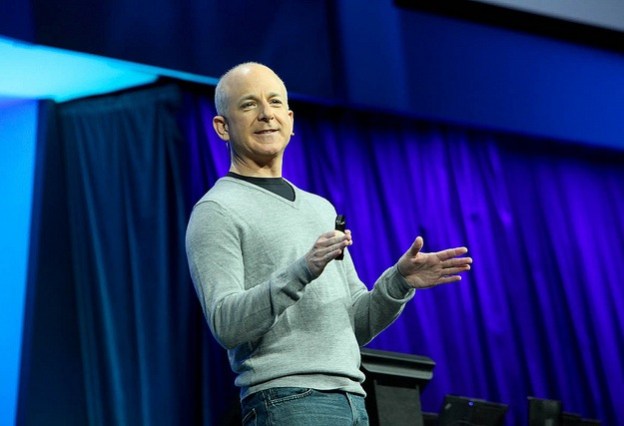 Steven Sinofsky. Remember him? Course you do. He was the fella whose sudden departure from Microsoft last November after 23 years at the company left many wondering if everything was jim-dandy at the Redmond-based computer giant.
Steven Sinofsky. Remember him? Course you do. He was the fella whose sudden departure from Microsoft last November after 23 years at the company left many wondering if everything was jim-dandy at the Redmond-based computer giant.
Almost eight months on, the terms of the former executive’s departure have been finalized, with a Securities and Exchange Commission filing released Wednesday revealing Sinofsky, who was head of Windows at Microsoft, is walking away with over 400,00 shares (unvested stock awards in addition to some stock from his final year of work) worth $14 million at the current price.
Conditions attached to the “Retirement Agreement” appear to be fairly standard for such a scenario, stipulating that Sinofsky must “not compete with Microsoft by accepting employment at certain competitors” or encourage “certain customers of Microsoft to choose a competing offering to Microsoft products.” The non-compete proviso stays in place until the end of 2013, after which time he’s free to take up a position with a Microsoft rival.
He’s also prohibited from making disparaging statements about his former employer and mustn’t encourage any current employees to jump ship for a competing outfit.
For $14 million, we can expect he’ll have little difficulty upholding the terms of the agreement.
Sinofsky was a key player at Microsoft, helping to revive the Windows OS after the disappointment of Vista, and working to bring Microsoft’s first tablet, the Surface, to the marketplace.
Departure
The reason for Sinofsky’s departure is to this day not entirely clear, though it was widely suggested that conflict with others inside the company – including with Microsoft boss Steve Ballmer – was a factor.
When he left the company last year, Sinofsky said he’d been “humbled by the professionalism and generosity of everyone I have had the good fortune to work with at this awesome company.” Ballmer was a little less ebullient, saying simply that he was “grateful” for Sinofsky’s contribution.
With time on his hands, Sinofsky launched a tech product development blog in January and has also been teaching at Harvard Business School.


